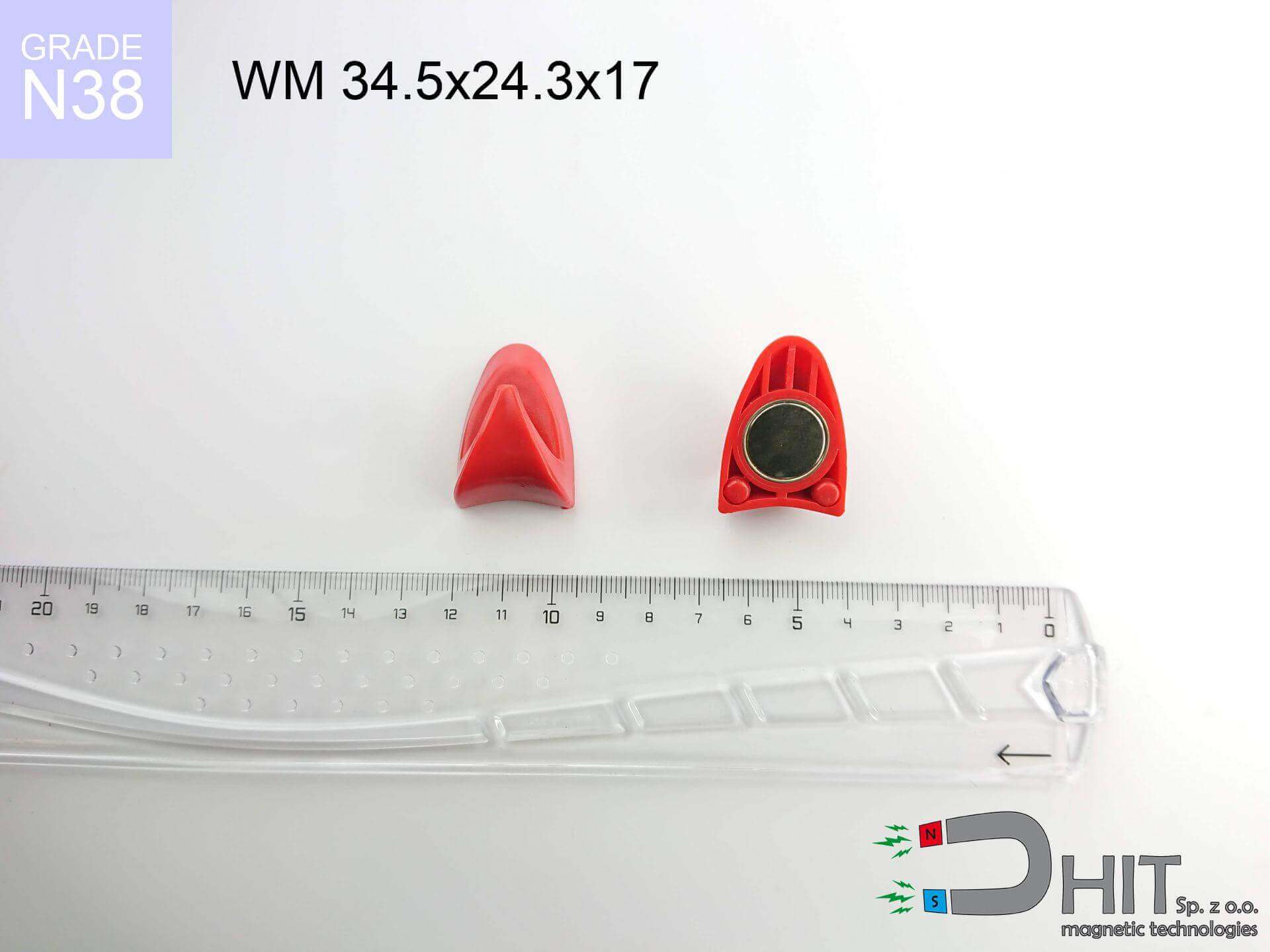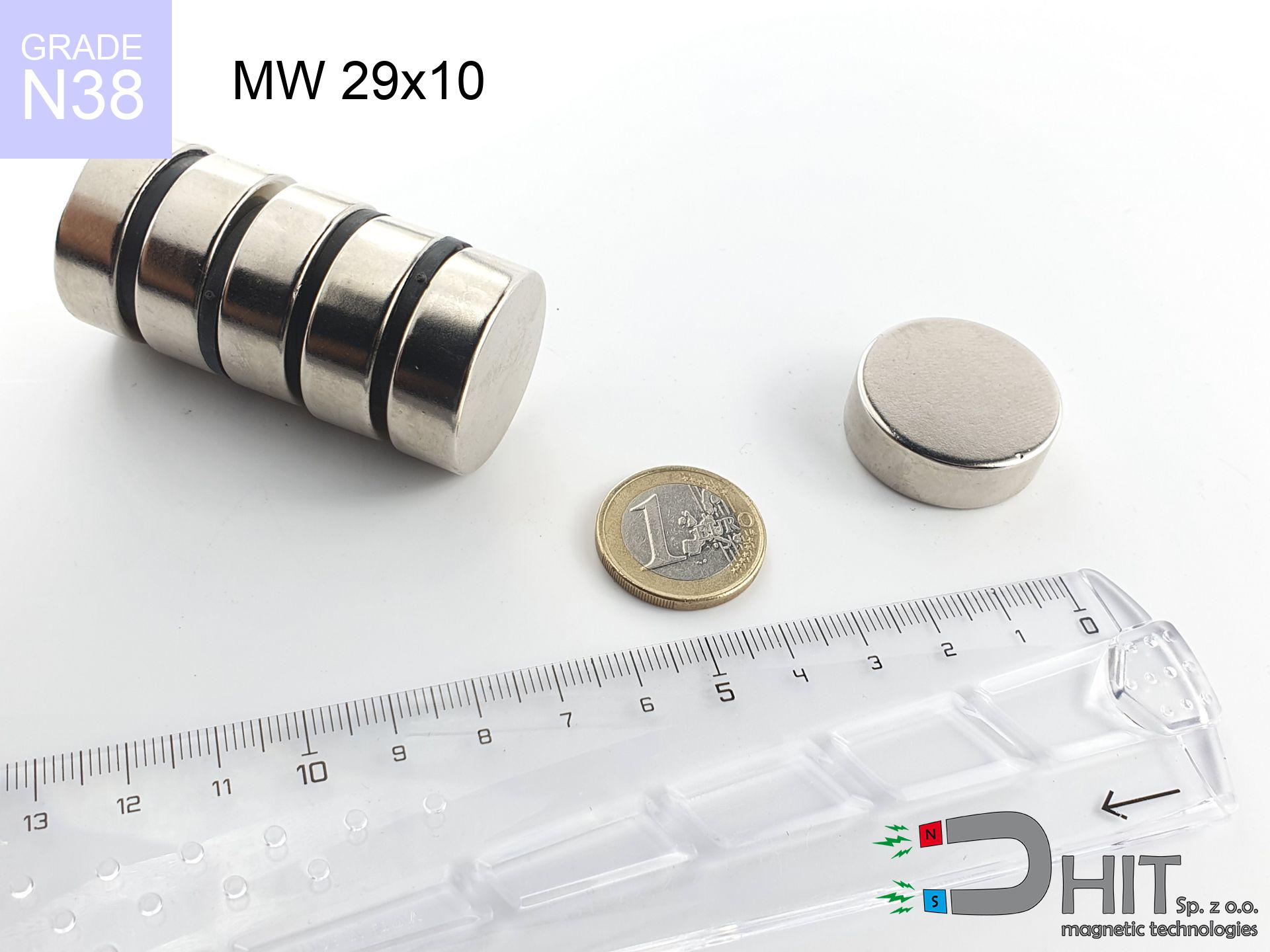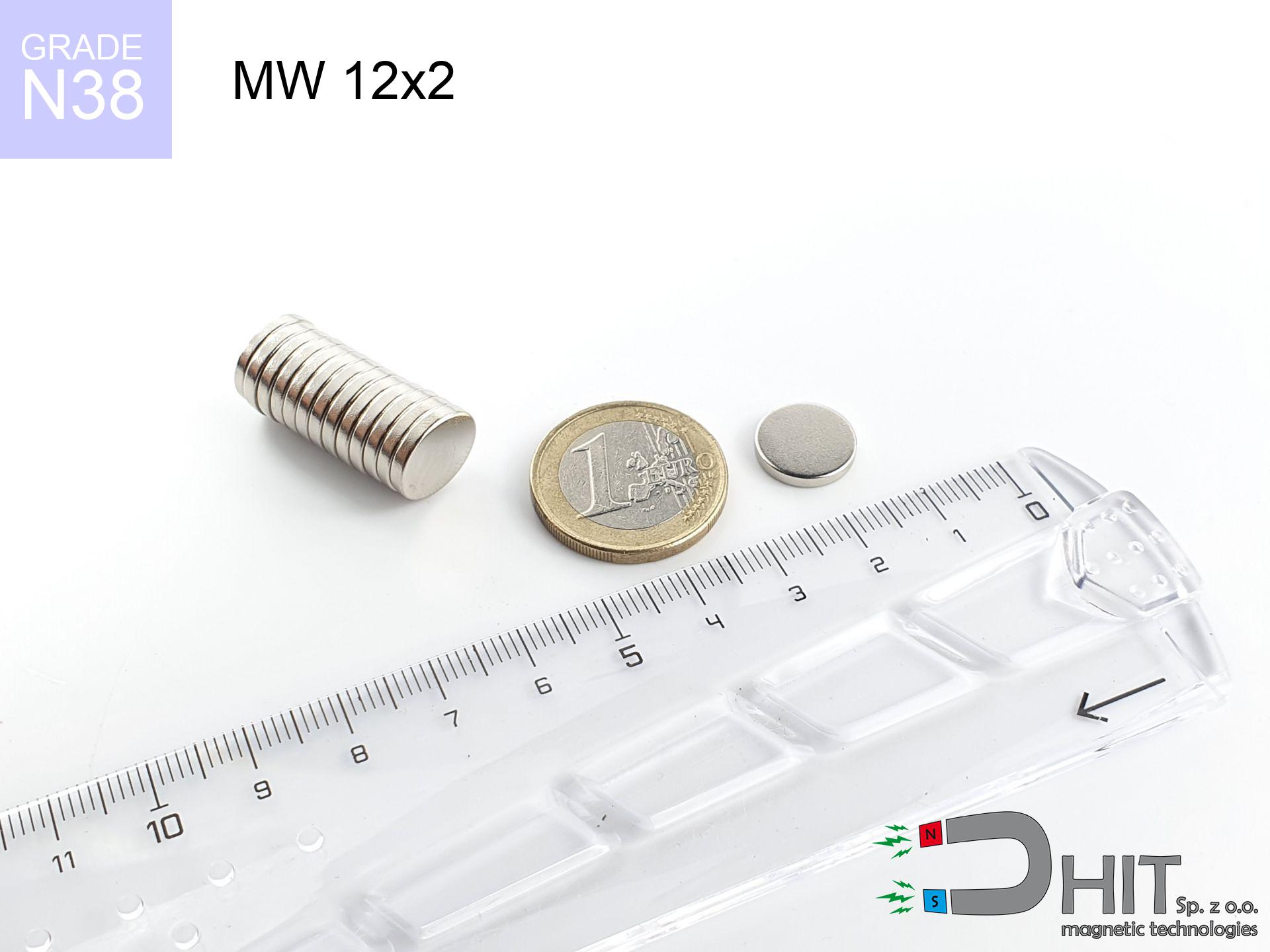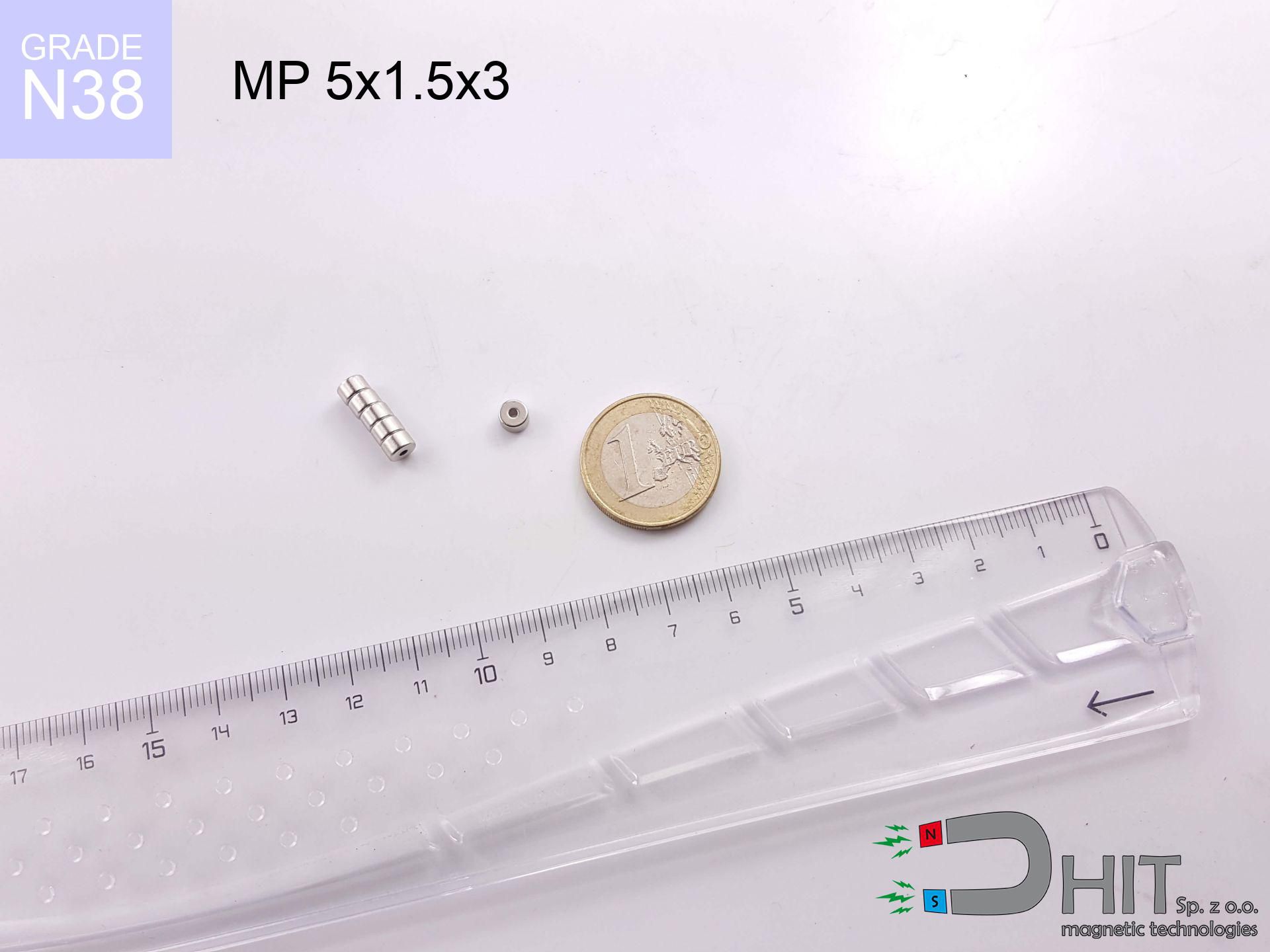WM 34.5x24.3x17 / N38 - magnetic hanger
magnetic hanger
Catalog no 240215
GTIN/EAN: 5906301814382
length
34.5 mm [±1 mm]
Width
24.3 mm [±1 mm]
Height
17 mm [±1 mm]
Weight
9 g
Coating
[NiCuNi] Nickel
4.99 ZŁ with VAT / pcs + price for transport
4.06 ZŁ net + 23% VAT / pcs
bulk discounts:
Need more?
Give us a call
+48 888 99 98 98
if you prefer get in touch through
inquiry form
our website.
Strength and appearance of a neodymium magnet can be verified with our
magnetic calculator.
Same-day shipping for orders placed before 14:00.
Detailed specification - WM 34.5x24.3x17 / N38 - magnetic hanger
Specification / characteristics - WM 34.5x24.3x17 / N38 - magnetic hanger
| properties | values |
|---|---|
| Cat. no. | 240215 |
| GTIN/EAN | 5906301814382 |
| Production/Distribution | Dhit sp. z o.o. |
| Country of origin | Poland / China / Germany |
| Customs code | 85059029 |
| length | 34.5 mm [±1 mm] |
| Width | 24.3 mm [±1 mm] |
| Height | 17 mm [±1 mm] |
| Weight | 9 g |
| Coating | [NiCuNi] Nickel |
| Manufacturing Tolerance | ±1 mm |
Magnetic properties of material N38
| properties | values | units |
|---|---|---|
| remenance Br [min. - max.] ? | 12.2-12.6 | kGs |
| remenance Br [min. - max.] ? | 1220-1260 | mT |
| coercivity bHc ? | 10.8-11.5 | kOe |
| coercivity bHc ? | 860-915 | kA/m |
| actual internal force iHc | ≥ 12 | kOe |
| actual internal force iHc | ≥ 955 | kA/m |
| energy density [min. - max.] ? | 36-38 | BH max MGOe |
| energy density [min. - max.] ? | 287-303 | BH max KJ/m |
| max. temperature ? | ≤ 80 | °C |
Physical properties of sintered neodymium magnets Nd2Fe14B at 20°C
| properties | values | units |
|---|---|---|
| Vickers hardness | ≥550 | Hv |
| Density | ≥7.4 | g/cm3 |
| Curie Temperature TC | 312 - 380 | °C |
| Curie Temperature TF | 593 - 716 | °F |
| Specific resistance | 150 | μΩ⋅cm |
| Bending strength | 250 | MPa |
| Compressive strength | 1000~1100 | MPa |
| Thermal expansion parallel (∥) to orientation (M) | (3-4) x 10-6 | °C-1 |
| Thermal expansion perpendicular (⊥) to orientation (M) | -(1-3) x 10-6 | °C-1 |
| Young's modulus | 1.7 x 104 | kg/mm² |
Elemental analysis
| iron (Fe) | 64% – 68% |
| neodymium (Nd) | 29% – 32% |
| boron (B) | 1.1% – 1.2% |
| dysprosium (Dy) | 0.5% – 2.0% |
| coating (Ni-Cu-Ni) | < 0.05% |
Sustainability
| recyclability (EoL) | 100% |
| recycled raw materials | ~10% (pre-cons) |
| carbon footprint | low / zredukowany |
| waste code (EWC) | 16 02 16 |
View also deals
Advantages as well as disadvantages of rare earth magnets.
Benefits
- They retain attractive force for almost 10 years – the drop is just ~1% (based on simulations),
- They possess excellent resistance to weakening of magnetic properties as a result of external fields,
- The use of an metallic finish of noble metals (nickel, gold, silver) causes the element to present itself better,
- They show high magnetic induction at the operating surface, which improves attraction properties,
- Made from properly selected components, these magnets show impressive resistance to high heat, enabling them to function (depending on their form) at temperatures up to 230°C and above...
- Possibility of individual forming and optimizing to defined applications,
- Fundamental importance in future technologies – they are used in HDD drives, electric drive systems, advanced medical instruments, as well as technologically advanced constructions.
- Thanks to concentrated force, small magnets offer high operating force, with minimal size,
Limitations
- To avoid cracks upon strong impacts, we suggest using special steel housings. Such a solution protects the magnet and simultaneously increases its durability.
- Neodymium magnets lose their force under the influence of heating. As soon as 80°C is exceeded, many of them start losing their force. Therefore, we recommend our special magnets marked [AH], which maintain durability even at temperatures up to 230°C
- When exposed to humidity, magnets start to rust. To use them in conditions outside, it is recommended to use protective magnets, such as those in rubber or plastics, which secure oxidation and corrosion.
- We suggest cover - magnetic mechanism, due to difficulties in producing nuts inside the magnet and complex forms.
- Health risk resulting from small fragments of magnets pose a threat, if swallowed, which gains importance in the aspect of protecting the youngest. It is also worth noting that small elements of these magnets can be problematic in diagnostics medical after entering the body.
- Higher cost of purchase is one of the disadvantages compared to ceramic magnets, especially in budget applications
Holding force characteristics
Maximum holding power of the magnet – what affects it?
- on a base made of structural steel, perfectly concentrating the magnetic flux
- with a thickness of at least 10 mm
- with a plane free of scratches
- with direct contact (no paint)
- for force applied at a right angle (in the magnet axis)
- in temp. approx. 20°C
Practical aspects of lifting capacity – factors
- Space between surfaces – even a fraction of a millimeter of distance (caused e.g. by veneer or dirt) drastically reduces the pulling force, often by half at just 0.5 mm.
- Loading method – catalog parameter refers to detachment vertically. When applying parallel force, the magnet exhibits significantly lower power (typically approx. 20-30% of nominal force).
- Wall thickness – the thinner the sheet, the weaker the hold. Part of the magnetic field penetrates through instead of generating force.
- Metal type – different alloys attracts identically. High carbon content weaken the interaction with the magnet.
- Surface structure – the more even the plate, the better the adhesion and higher the lifting capacity. Unevenness creates an air distance.
- Temperature influence – hot environment reduces magnetic field. Too high temperature can permanently damage the magnet.
Lifting capacity testing was performed on plates with a smooth surface of optimal thickness, under a perpendicular pulling force, whereas under shearing force the lifting capacity is smaller. Additionally, even a slight gap between the magnet and the plate reduces the lifting capacity.
Precautions when working with NdFeB magnets
Beware of splinters
Protect your eyes. Magnets can explode upon uncontrolled impact, launching shards into the air. We recommend safety glasses.
Keep away from children
NdFeB magnets are not suitable for play. Swallowing several magnets can lead to them attracting across intestines, which poses a severe health hazard and necessitates immediate surgery.
Implant safety
Individuals with a pacemaker should keep an safe separation from magnets. The magnetism can stop the operation of the life-saving device.
Dust explosion hazard
Combustion risk: Rare earth powder is highly flammable. Do not process magnets without safety gear as this risks ignition.
Allergy Warning
Warning for allergy sufferers: The Ni-Cu-Ni coating contains nickel. If redness appears, immediately stop handling magnets and use protective gear.
Keep away from electronics
GPS units and smartphones are extremely sensitive to magnetism. Direct contact with a strong magnet can decalibrate the internal compass in your phone.
Data carriers
Data protection: Neodymium magnets can damage data carriers and sensitive devices (heart implants, hearing aids, mechanical watches).
Maximum temperature
Keep cool. NdFeB magnets are sensitive to temperature. If you need resistance above 80°C, inquire about HT versions (H, SH, UH).
Immense force
Before starting, check safety instructions. Sudden snapping can destroy the magnet or injure your hand. Be predictive.
Pinching danger
Pinching hazard: The pulling power is so great that it can cause hematomas, crushing, and broken bones. Use thick gloves.





![UMGW 36x18x8 [M8] GW / N38 - magnetic holder internal thread UMGW 36x18x8 [M8] GW / N38 - magnetic holder internal thread](https://cdn3.dhit.pl/graphics/products/um-36x18x8-m8-gw-foj.jpg)



